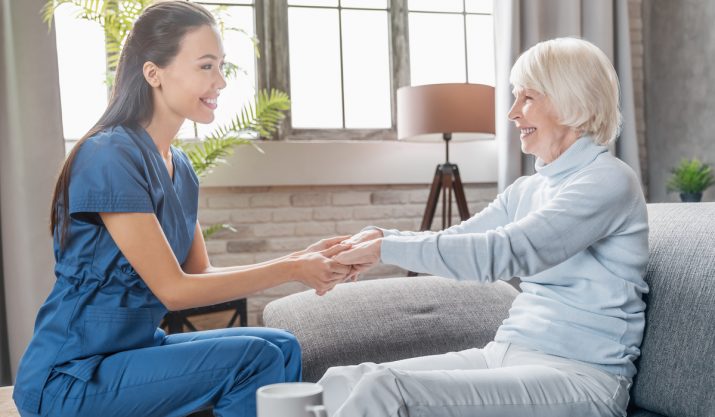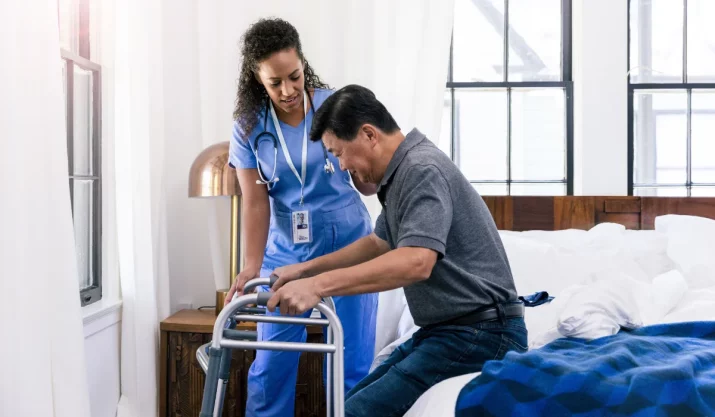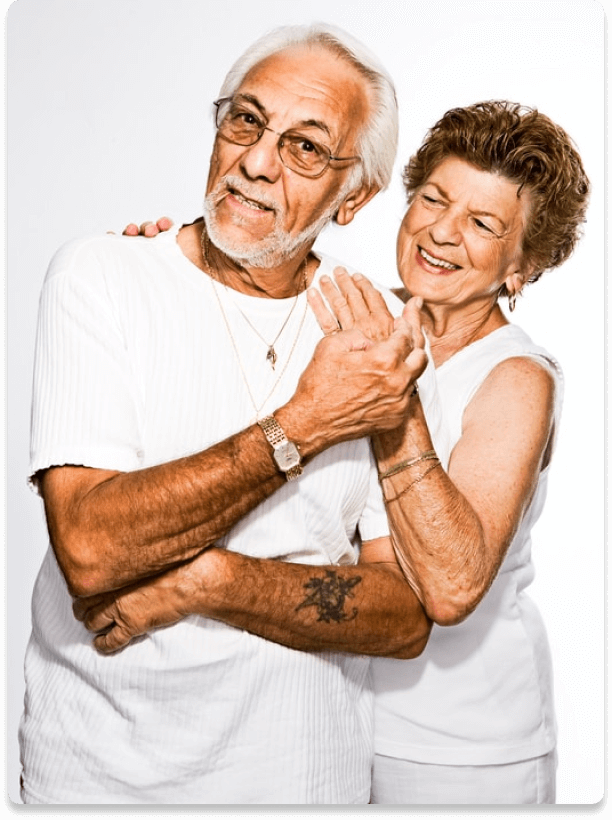Emergency Treatment For High Blood Pressure At Home
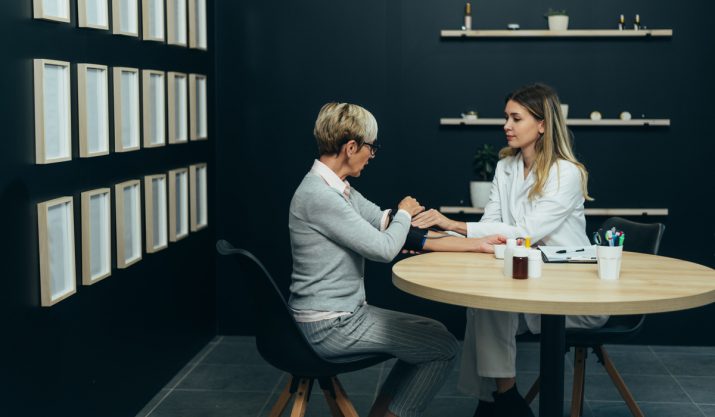
Table of Contents
- Key Takeaways
- What Is High Blood Pressure?
- The Two Types of High Blood Pressure To Watch Out For
- When to Call for Emergency Medical Help
- Causes and Symptoms of Sudden High Blood Pressure
- How To Lower High Blood Pressure Immediately at Home
- Controlling Blood Pressure: Preventative Tips
- The Bottom Line
If you’re one of the millions of people in the United States (U.S.) with high blood pressure, then you know how important it is to keep your levels under control. But what if you have a spike in blood pressure and can’t get to the doctor in time?
Don’t worry. There are some things you can do at home to help lower your blood pressure until you can get to a professional. In this blog post, we’ll discuss four emergency treatments for high blood pressure that you can use at home.
Key Takeaways
- A hypertensive emergency is when your blood pressure readings are 180/120 or greater and accompanied by dangerous symptoms like shortness of breath or chest pain.
- Visit an ER immediately if you have a hypertensive emergency. If your blood pressure readings are high without symptoms, there are at-home steps you can take to reduce them.
- Drink a cup of tea, try to relax, and sit down—these are steps you can take to reduce high blood pressure in a non-emergency situation.
What Is High Blood Pressure?
According to the American Heart Association, high blood pressure, also known as hypertension, is when your blood pressure is too high.
This is when the force of your blood pushing against the walls of your arteries is too high.
For most people, their blood pressure readings should be below 120/80 mm Hg. Elevated blood pressure is anything higher than that.
When taking your blood pressure readings, you’ll look at two numbers: the systolic pressure, which is the first or top number and measures how much pressure your blood exerts against your artery walls with each heartbeat; and your diastolic blood pressure, which is the second number, on the bottom.
The diastolic blood pressure indicates how much pressure is being exerted when your heart is resting between beats.
The Two Types of High Blood Pressure To Watch Out For
A hypertensive crisis is when your blood pressure rises quickly and suddenly to 180/120 or higher. There are two types of hypertensive crises—“hypertensive urgency” and “hypertensive emergency.”
A hypertensive urgency is a rather arbitrary distinction from a hypertensive emergency in that there is no evidence of organ damage. In many cases, you would have symptoms if you were having organ damage, such as chest pain, shortness of breath, weakness or numbness, or loss of consciousness.
However, acute kidney failure may not produce any symptoms right away, and eclampsia in pregnant women also may not be immediately symptomatic.
| Type | BP Readings | Symptoms | What to Do |
|---|---|---|---|
| Hypertensive Urgency | 180/120 or greater | No other symptoms besides high readings | Wait five minutes and take a second reading |
| Hypertensive Emergency | 180/120 or greater | High BP readings along with any of the following symptoms: chest pain, back pain, change in vision, shortness of breath, etc. | Call 911 or get to your doctor ASAP |
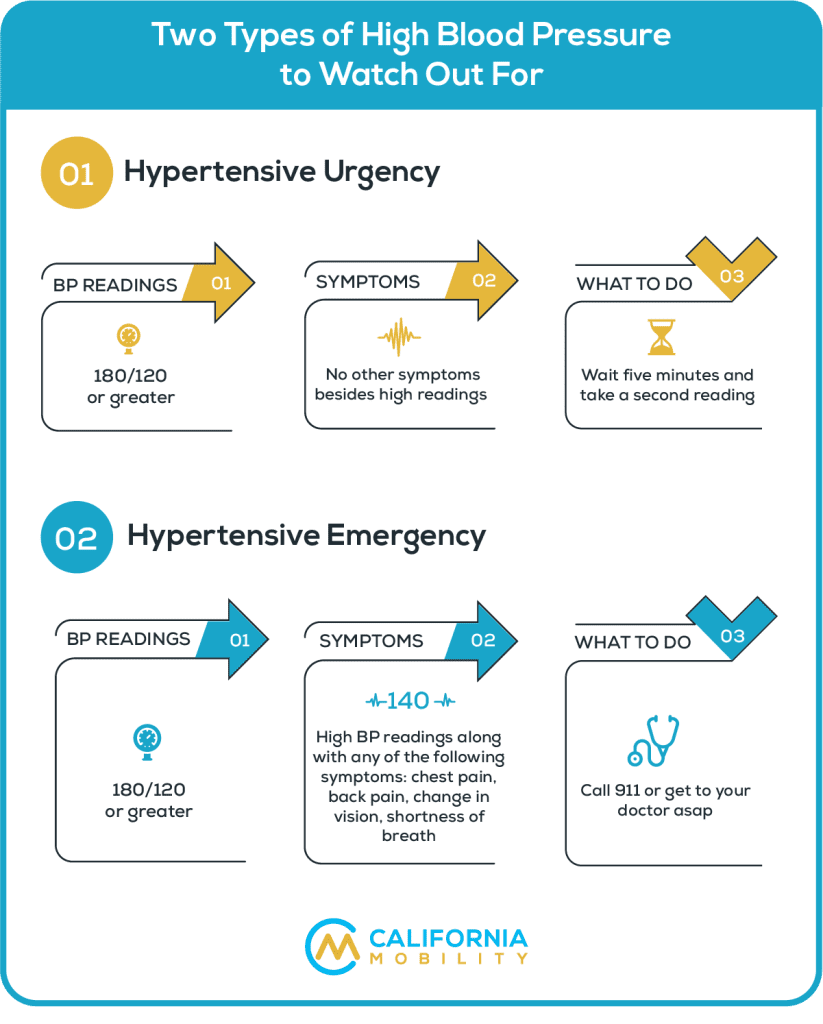
What Happens During a Hypertensive Crisis?
A hypertensive crisis is dangerous because uncontrolled severe blood pressure elevation can cause short- or long-term problems, such as:
- Eclampsia
- Stroke
- Memory loss
- Heart attack
- Eye and kidney damage (including kidney failure)
- Aortic dissection
- Pulmonary edema
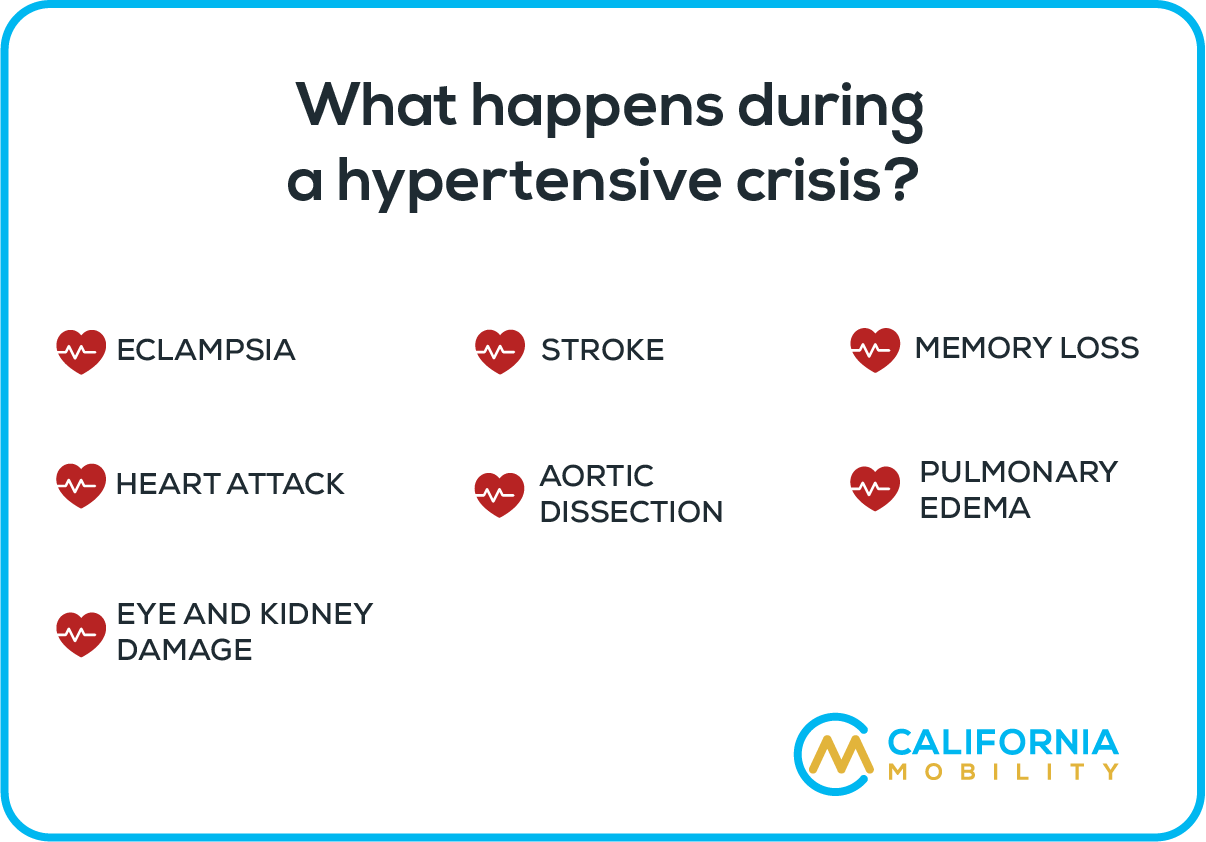
When to Call for Emergency Medical Help
The American Heart Association (AHA) recommends that if you’ve noticed a hypertensive crisis and have any symptoms at all (besides just a high reading), it’s important that you call for emergency care immediately (for example, by calling 911 in North America).
If you have a hypertensive crisis and no symptoms, then you are likely having a hypertensive urgency. In such a case, the AHA recommends waiting 1-2 minutes and rechecking your blood pressure. If it is still high, be vigilant for any symptoms that might indicate a hypertensive emergency.
In a hypertensive crisis, the AHA suggests that you do not need to go to the hospital but that you should contact your healthcare provider as soon as you can.
The only time you should attempt these emergency treatments for high blood pressure at home is when you have the high reading alone—and nothing else.
Causes and Symptoms of Sudden High Blood Pressure
Sudden high blood pressure spikes can be caused by various factors.
One of these is known as white coat hypertension, which is when your blood pressure suddenly spikes the minute you walk into a doctor’s office. Though inconvenient, because it is here where you’re most likely to have your readings taken, it’s mostly harmless and simply caused by the anxiety you experience in this setting.
Other causes of sudden spikes in blood pressure include:
- Caffeine
- Certain medications (such as nasal decongestants)
- Smoking
- Anxiety/stress
- Drug use (especially stimulants, such as cocaine)
- Medical conditions (stroke, heart attack, eclampsia, etc.)
How To Lower High Blood Pressure Immediately at Home
“Exercise regularly. Walking, jogging, biking, or strength training for just 30 minutes a day, three to four times a week can help lower your blood pressure. Reduce sodium in your diet. Cut back on foods high in sodium like pizza, chips, pretzels, and canned soups. Aim for less than 2,300 mg per day. Practice relaxation techniques. Try meditation, yoga, or deep breathing. Reducing stress can significantly impact blood pressure.”
Dr. Aaron Erez, Owner, Erez Functional Medicine
There are a few ways you can try to lower your blood pressure immediately at home. Trying to rapidly lower your blood pressure might not always be a great idea—it’s best to keep your readings stable and at a normal level.
But if you’re panicking over your high blood pressure readings, give these tactics a try.
Take a Second Reading
A higher-than-normal blood pressure reading could be cause for alarm—or it could just be a blip or error. Sit, put your feet flat on the floor, and make sure your elbow is at the level of your heart. Take your reading again. See what the results say—then keep reading.
Stay Calm
Stay calm if you’ve noticed a high blood pressure reading. Being calm can reduce your blood pressure, so take a few moments to focus on your breathing. Sit down and take a few deep breaths.
Take Blood Pressure Medication
If you missed taking your prescribed blood pressure medication, take it.
Have a Cup of Tea
There are several types of tea that can help reduce your blood pressure because they make you feel calmer. Hibiscus and chamomile tea are good options. Avoid caffeine (such as black tea), as it will cause your blood pressure to spike.
If tea isn’t your thing, don’t worry—even sipping a glass of cool water can help.
Eat a Piece of Dark Chocolate
Dark chocolate releases endorphins—the chemicals in your brain that make you feel good—and there is some evidence that it may widen blood vessels and lower blood pressure. Have a piece of dark chocolate to help you relax, but don’t overdo it—the sugar could cause another spike in your blood pressure.
Controlling Blood Pressure: Preventative Tips
While nobody likes having to deal with high blood pressure, there are steps you can follow in the future to prevent emergency-level high blood pressure readings at home.
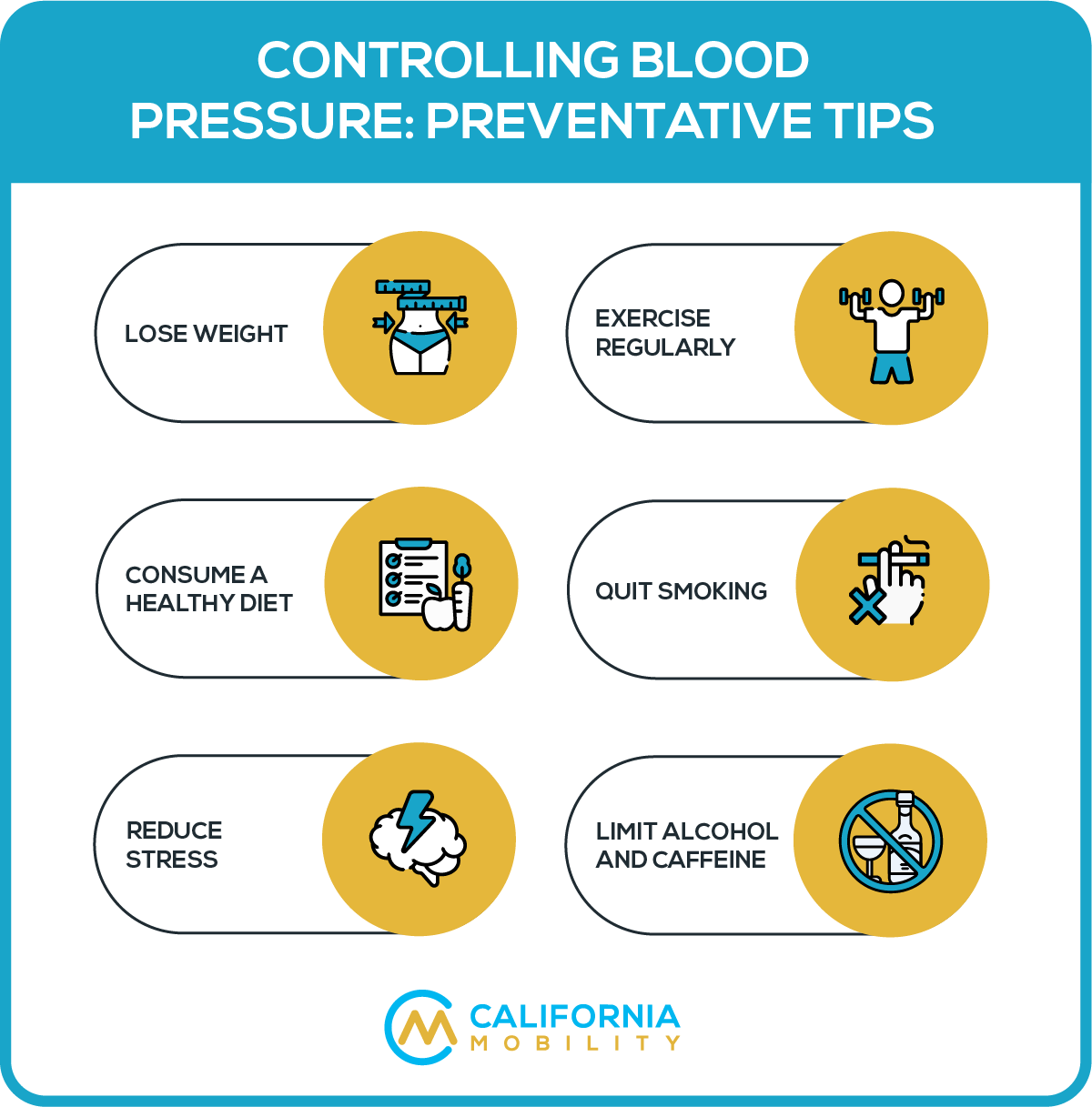
Lose Weight
One of the best ways that people can lower blood pressure is to lose weight. Being overweight or obese is one of the biggest risk factors for high blood pressure, so weight loss can make a big difference.
Exercise Regularly
Another one of the most effective lifestyle changes you can make to lower your blood pressure is to exercise regularly. Even as little as 30 minutes a day of light exercise, like walking, can make a big difference.
Consume a Healthy Diet
Studies show that consuming a healthy diet is one of the best things you can do to keep a normal blood pressure. Limit sodium and aim to eat as many fruits and vegetables as possible.
There’s some evidence that eating more potassium may help reduce your blood pressure, too. That’s because it counteracts the effects of sodium on your blood vessels. Consider adding more foods like beans, baked potatoes, bananas, and spinach to your diet.
Limit Alcohol and Caffeine
Limit alcohol (no more than two drinks a day for men and one for women) and caffeine. Both of these produce side effects that can lead to high blood pressure.
Quit Smoking
If you smoke, stop immediately. This is one of the most common variables when it comes to an elevated risk of heart disease.
Reduce Stress Levels
Some stress is unavoidable—but you should do your best to avoid chronic stress that can raise your blood pressure and lead to unhealthy habits like substance abuse or overeating. Learning to manage stress can help reduce the effects of a stressful life on your health.
Make the time for activities that you enjoy (and that naturally reduce your stress levels), such as:
- Meditating
- Painting
- Spending time with family and friends
- Gardening
Monitor Your Blood Pressure at Home
Take your blood pressure readings at home as often as you can, ideally on a daily basis. This will help you address any issues that may require further medical care—before they become dangerous.
Visit Your Doctor
Visit your healthcare provider on a regular basis. This is important for everyone, but especially for individuals with high blood pressure. Your healthcare provider can help you monitor your blood pressure and other vital signs while also being able to suggest changes (like medication) that can make a difference.
Get Help
While it’s best to get your medical advice and formal medical intervention from a healthcare provider, the good news is that this isn’t the only person you can turn to in order to reduce your risk of high blood pressure.
You can also rely on your family and friends! Having a strong support network is a key part of living a healthy lifestyle. These people can help to reduce stress and make it easier for you to stay healthy—perhaps without any blood pressure medicines at all! and make it easier for you to stay healthy – perhaps without any blood pressure medicines at all!
The Bottom Line
If you are among the nearly 50% of American adults with high blood pressure, according to the Centers for Disease Control and Prevention (CDC), knowing how to lower it quickly is important.
While emergency medical treatment for a hypertensive emergency at a hospital is always best, there are some steps you can take at home to help bring your numbers down.
Consider these tips, and be sure to consult with your doctor if you have any questions or concerns.




